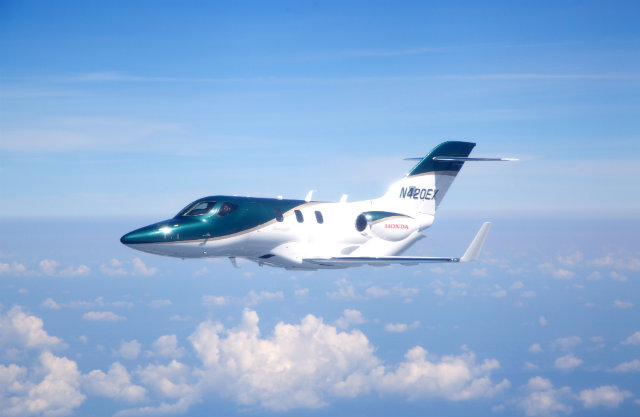Shipments of fixed-wing business and general aviation aircraft made modest gains in 2017, but performance across the sector was mixed.
In its annual review, released on 21 February, the General Aviation Manufacturers Association (GAMA) records total deliveries of 2,324 fixed-wing aircraft, valued at $20.2 billion, for the year ended 31 December.
This compares with deliveries of 2,268 business jets, pistons, and turboprops, for a total of $21.1 billion, over the previous 12 months. This year-on-year decline in the value of the shipments is due to a shift in the mix of aircraft to small, less expensive models and the continued pressure on aircraft pricing.
The piston-engined sector was the best performer, recording a 6.5% increase to 1,085 aircraft, compared with 1,019 units in 2016, GAMA data shows.

Honda Aircraft
The business jet segment recorded a slight uptick in deliveries of 1.3% to 676, against 667 shipments last year. This is thanks largely to the ramp-up in production of Honda Aircraft’s HA-420 HondaJet, from 23 to 43, and of the Cirrus Vision Jet, from three to 22.
The turboprop sector was the worst performer in the fixed-wing aircraft market, recording a 3.3% drop in deliveries to 563 aircraft, GAMA data shows. The 19-unit slide is due almost entirely to the poorly performing twin-engined segment. Weak demand for the Beechcraft King Air family from its traditionally strong international marketplace resulted in a 20-unit fall in shipments, to 86 aircraft.
Piaggio, meanwhile, delivered only a pair of P.180 Avanti Evos during 2017, one fewer than the previous year.
Despite the sector's mixed performance, GAMA chief executive Pete Bunce describes the 2017 shipments and billings as “encouraging”. He is confident that the industry is finally turning a corner after almost a decade of uncertainty, citing “positive economic indicators” and “stabilisation in the used business aircraft market” among the reasons for his optimism.
Source: Flight International



















